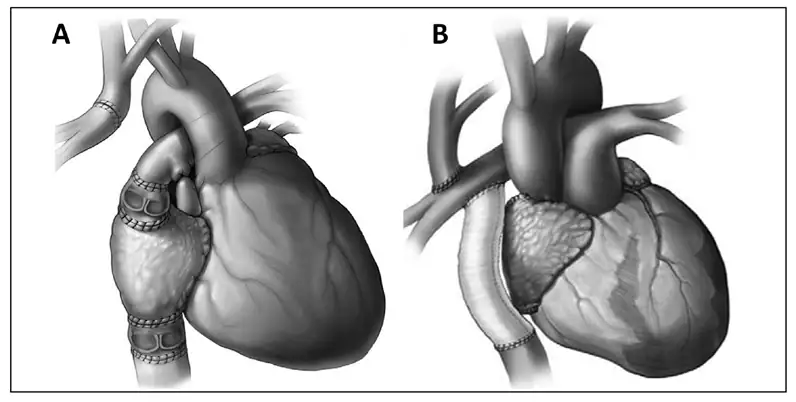Is Fontan Surgery the Right Choice for My Child’s Heart Condition?

When a child has a complex heart problem from birth, parents have to decide on the best treatment. One option is Fontan surgery, which has been done worldwide for many years. Newer techniques and better care after surgery have made it more successful.
In 2020, about 47,881 people in 11 countries had Fontan surgeries (66 per million). This number is expected to increase to 59,777 (79 per million) by 2030. In 2020, 55% were adults, 17% were teens, and 28% were children. By 2030, it’s predicted to be 64% adults, 13% teens, and 23% kids.
Fontan surgery has become safer over the years. A study found that between 1973 and 2013, about 70% of children who had Fontan surgery survived for 20 years or more. It’s important to understand what Fontan surgery involves, how it helps, and whether it suits your child. Let’s look into this to help you decide.
What is Fontan Surgery?
Fontan surgery is a procedure used to treat complex congenital heart defects (CHDs) in children. During the surgery, the surgeon redirects blood flow from the lower body directly to the lungs, bypassing the heart’s right ventricle. This allows oxygen-depleted blood from the body to go directly to the lungs to receive oxygen without passing through the heart’s pumping chamber. The surgery is typically done in stages, with the final stage completed when the child is around 2 to 5 years old.
Dr. Dinesh Kumar Mittal is a renowned pediatric cardiologist known for his expertise in treating children with congenital heart defects, including Fontan surgery. With years of experience and a compassionate approach, he has helped numerous children achieve better heart health and improved quality of life. His dedication to excellence in pediatric cardiology makes him a trusted choice for Fontan surgery and related treatments.
What Are The Benefits Of this Surgery?
Fontan surgery offers several benefits for children with complex congenital heart defects:
- Improved Oxygen Levels: Fontan surgery helps improve oxygen levels in the blood by bypassing the heart’s right ventricle.
- Enhanced Heart Function: The surgery can improve the heart’s overall function, leading to better circulation.
- Increased Life Expectancy: Fontan surgery has improved the life expectancy of children with certain heart defects.
- Better Quality of Life: Many children experience an improved quality of life after Fontan surgery, with increased energy levels and the ability to participate in more activities.
“Fontan surgery is crucial in improving your child’s growth and development. By enhancing oxygenation and circulation, the surgery ensures that your child’s body receives adequate oxygen and nutrients, promoting proper growth. Additionally, improved heart function allows for increased physical activity, essential for overall development. Fontan surgery can significantly improve your child’s quality of life and long-term health,” explains Dr. Mittal.
Is Fontan Surgery the Right Choice?
The decision to proceed with Fontan surgery for a child with a congenital heart defect is complex and depends on various factors. These include the specific nature of the child’s heart condition, overall health, and the potential risks and benefits of the surgery. While Fontan surgery has the potential to significantly improve the quality of life and increase life expectancy for many children, it is not without risks.
Some children may experience complications following Fontan surgery, such as arrhythmias (abnormal heart rhythms), protein-losing enteropathy (a condition affecting the intestines), or Fontan-associated liver disease. These risks must be carefully weighed against the potential benefits of the surgery.
To determine if Fontan surgery is the right choice for your child, it is essential to consult with a pediatric cardiologist who specializes in congenital heart defects. They will assess your child’s condition, explain the potential risks and benefits of surgery, and help you make an informed decision based on your child’s circumstances.
A delighted patient shared, “Before my son’s Fontan surgery, he struggled with low energy and couldn’t keep up with other children. After the surgery, it was like a switch flipped. He has much more energy now and can play with his friends without getting tired. We’re so grateful for the surgery and its difference in his life.”
Another patient expressed, “When we found out our daughter needed Fontan surgery, we were scared and unsure. But after talking with Dr. Mittal and seeing how caring he was, we felt more at ease. The surgery went smoothly, and now our daughter is thriving. She’s happier more active, and her health has improved so much. We thank Dr. Mittal and his team for helping our daughter.”
How Much Does Fontan Surgery Cost In India?
In India, the cost of Fontan surgery can vary widely depending on several factors, including the hospital, the surgeon’s fees, the complexity of the surgery, and any additional medical care needed. On average, the cost of Fontan surgery in India can range from INR 5,00,000 to INR 7,00,000 (approximately USD 5,400 to USD 9,000). However, the cost can be higher in some cases, especially if the surgery is complex or has complications.
Here is a table summarizing the estimated cost of Fontan surgery in India:
| Cost Component | Estimated Cost Range (INR) | Estimated Cost Range (USD) |
| Surgery Charges | 2,50,000 – 6,00,000 | 3,400 – 8,100 |
| Hospital Stay | 1,00,000 – 2,00,000 | 1,400 – 2,700 |
| Medications | 50,000 – 1,00,000 | 675 – 1,350 |
| Tests and Investigations | 50,000 – 1,00,000 | 675 – 1,350 |
| Miscellaneous Expenses | 50,000 – 1,00,000 | 675 – 1,350 |
| Total Approximate Cost | 4,00,000 – 10,00,000 | 5,400 – 13,500 |
It is important to note that these are approximate costs and can vary based on individual circumstances. Additionally, some hospitals in India offer financial assistance or discounts for pediatric cardiac surgeries, which can help reduce the overall patient cost.
Conclusion
Fontan surgery can be a life-saving procedure for children with complex CHDs, offering improved quality of life and increased life expectancy for many patients. However, the decision to undergo Fontan surgery should be made carefully, weighing the potential benefits and risks based on the child’s circumstances. Consulting with a pediatric cardiologist specializing in CHD is crucial in making an informed decision regarding your child’s treatment.
FAQs about Fontan Surgery
-
What is the success rate of Fontan surgery?
The success rate of Fontan surgery is generally high, with many children experiencing improved heart function and quality of life.
-
How long does it take to recover from Fontan surgery?
The recovery time after Fontan surgery can vary, but most children can return to normal activities within a few weeks to a few months, depending on the individual case.
-
Are there any long-term effects of Fontan surgery?
Some children may experience long-term effects such as exercise intolerance, arrhythmias, or the need for additional surgeries later in life.
-
Can Fontan surgery be performed on adults?
Yes, Fontan surgery can be performed on adults who have congenital heart defects that require this type of procedure.
-
What should I expect during the recovery period after Fontan surgery?
During recovery, your child may need to take medications, attend follow-up appointments with their cardiologist, and gradually increase their activity level under medical supervision.
Read more : What Are the Risk Factors Associated with Aortopulmonary Window?
